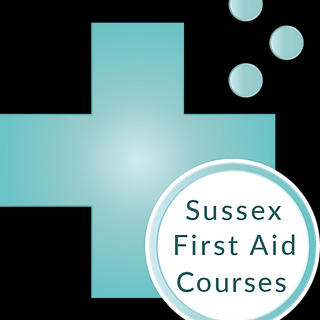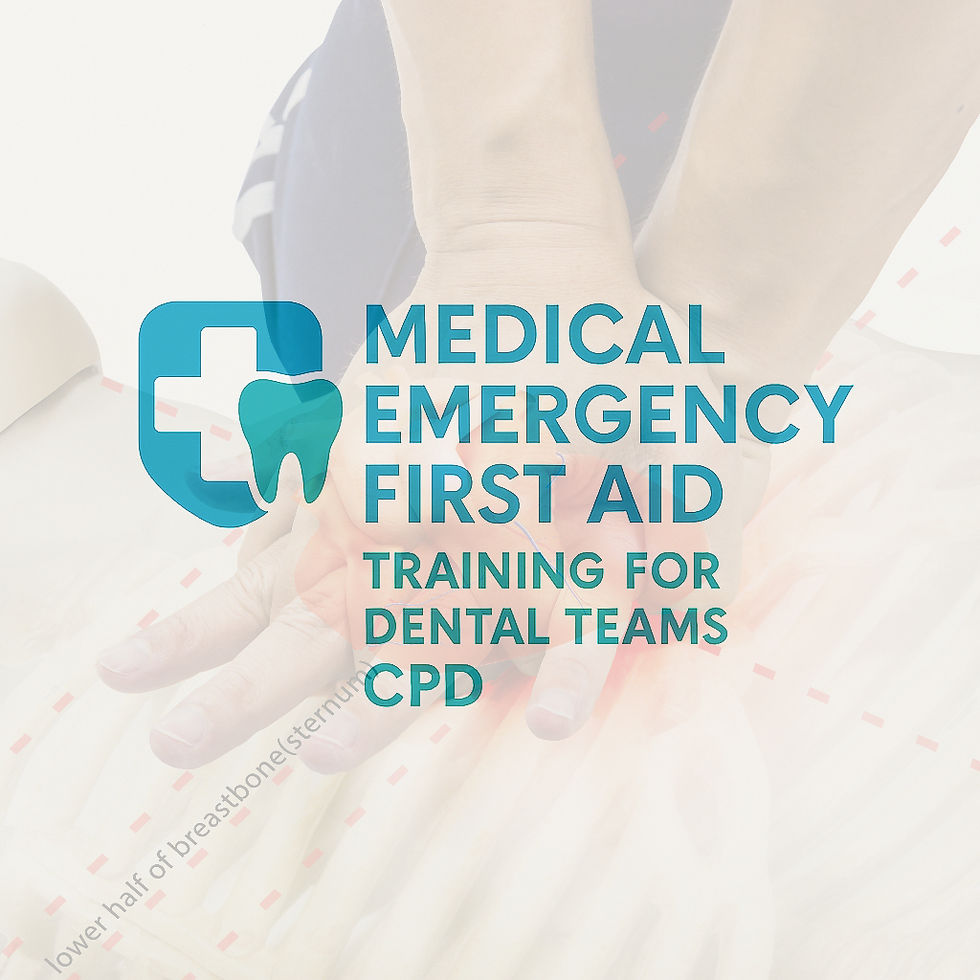Chest Pains and Management in The Dental Practice
- Admin
- Aug 29
- 4 min read
Updated: Sep 1
Angina vs Heart Attack (Myocardial Infarction): Understanding, Symptoms, and First Aid

Medical Emergency Guidelines for Dental Teams By Garry Perkins, HCPC Paramedic
The following guidance draws upon established protocols from the UK Resuscitation Council, NICE, BNF Dental Advisory Group, UK Ambulance JRCALC, GDC, and UK First Aid guidelines. These recommendations have been developed by Garry Perkins—an HCPC-registered paramedic with extensive experience teaching within dental practice settings and serving on the frontline—to offer dental teams a clear, practical, and effective framework for managing medical emergencies in the dental environment.
This is not intended to be a comprehensive clinical guideline covering all aspects of emergency care. Instead, it provides a realistic and workable approach tailored to the dental setting, where emergencies can be both challenging and unpredictable.
While the public may expect a high level of response during a medical emergency, it is important to recognise that dental professionals are not expected to operate beyond their scope of practice. At every stage of an emergency, dental team members should refer to current UK medical guidelines, seek appropriate advice, and—when necessary—call 999 or refer the patient for further care or investigation.
Heart disease is one of the leading causes of death worldwide, and two of its most important conditions are angina and myocardial infarction (MI), also known as a heart attack. While they may present with similar symptoms, they are very different in severity and management. Knowing how to spot the signs and respond quickly can save a life.
What is Angina
Angina is chest pain or discomfort that occurs when the heart muscle does not receive enough oxygen-rich blood.
It is usually caused by the build up of cholesterol plaques inside the coronary arteries.
These plaques narrow and harden the arteries, restricting blood flow.
When the heart needs more oxygen during exertion or emotional stress, it may not get enough supply—causing the classic crushing or vice-like chest pain.
👉 Typical features of angina:
Occurs during exertion or stress
Usually lasts a few minutes (5–10 minutes)
Improves with rest or glyceryl tri-nitrate (G.T.N.) spray
Pain may radiate to the arm, neck, or jaw
If angina occurs even at rest, it may indicate unstable angina, which carries a high risk of progressing to a heart attack.
What is a Myocardial Infarction (Heart Attack)
A myocardial infarction (MI) occurs when a coronary artery is completely blocked, cutting off blood supply to a part of the heart. Without oxygen, the heart muscle in that area begins to die.
Common causes include:
A blood clot (thrombus) forming inside the artery
A ruptured plaque causing sudden blockage
Unlike angina, a heart attack can happen at any time, even at rest, and requires urgent medical treatment.
👉 Typical features of myocardial infarction may may include:
Severe, crushing chest pain (may feel like indigestion)
Pain may radiate to the arm, neck, shoulders or jaw
Lasts longer than 10 minutes and does not improve with G.T.N. spray
Breathlessness, yawing (air hunger) sweating, pallor, sweating or grey skin
Nausea, vomiting, light-headedness, anxiety
Cyanosis (blue lips)
Sense of impending doom
Irregular or missed heartbeats
In severe cases: collapse or unconsciousness, cardiac arrest
⚠️ Around 30% of heart attacks are “silent”, with little to no obvious pain, making awareness of other symptoms crucial.
Top Tip: remember, Ladies, the elderly, the diabetic patient and South Asian people are prone to silent Myocardial infarctions (MIs) Keep a high suspicion and take no chances. If in dought call help.
Spot the Difference: Angina vs Heart Attack
Feature | Angina | Myocardial Infarction (Heart Attack) |
Cause | Narrowed arteries, reduced blood flow | Complete blockage of artery |
When it occurs | During exertion or stress | Anytime, including rest |
Duration | 5–10 minutes | Longer than 10 minutes |
Relief | Rest or G.T.N. spray | No relief with G.T.N. |
Risk | May lead to heart attack if untreated | Life-threatening emergency |
First Aid and Immediate Management
🔹 If Someone Has Angina
Sit the person upright, leaning slightly forward (never flat).
Monitor SPO2 levels using an pulse oximeter if available.
Give high-flow oxygen if SPO2 <94% if available.
Encourage them to use their G.T.N. spray (1–2 sprays under the tongue).
If the pain persists despite rest and G.T.N., suspect a heart attack and call emergency services immediately.
Once symptoms subside, allow them to rest, and arrange safe transport home ang give worsening care advice.
Document all treatment and worsening care advice given.
Top Tip: When using the patients medication (G.T.N Spray) check it's in date. Out of date G.T.N looses its strength.
🔹 If Someone Has a Suspected Heart Attack (MI)
Call an ambulance immediately – early hospital transfer saves heart muscle and lives.
Place them in an upright sitting position to ease breathing.
Administer high-flow oxygen if SPO2 levels <94% and available.
If they are not allergic give them a 300mg dispersible aspirin to chew slowly.
Monitor closely:
If they lose consciousness, check their airway and breathing.(DRAB)
If breathing is absent or abnormal, start CPR immediately and call 999 and grab the AED if available.
If breathing is normal and present, place them in the recovery position, monito closely and call 999
Final Thoughts
Both angina and myocardial infarction are serious heart conditions that should never be ignored. Angina is often a warning sign that the heart is under stress, while a heart attack is a medical emergency that requires immediate action.
Knowing the difference—and how to respond—could make the difference between life and death.
Top Tip: All chest pain should be considered cardiac until proven otherwise, If in doubt, always call emergency services. It’s better to be cautious than to miss a potentially life-threatening event.
Top Tip: When giving dental practices medications, check the drug doses at all stages and the indications and contraindications.
Top Tip: At all stages ask yourself. Do i need help, check if the. patient has any allergies to medications. Check drug dosages before administering. Document all treatment on an incident form, consider a team debrief.
Top Tip: Have your medical kit and drugs kit bag in a rescue Ready state, keep your Medical Emergencies in The Dental Practice Manual with your drugs kit for treatment and management reference.
Top Tip: Give high-flow oxygen if SPO2 levels are below <94%. if no SPO2 monitor available and your patient is looking cyanosis and shortness of breath, then administer oxygen and document.





Comments